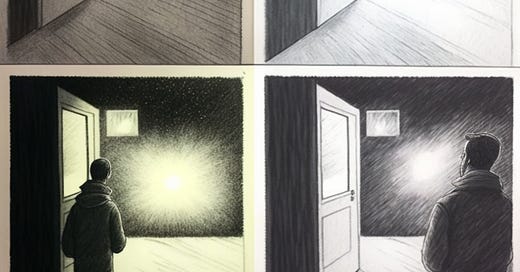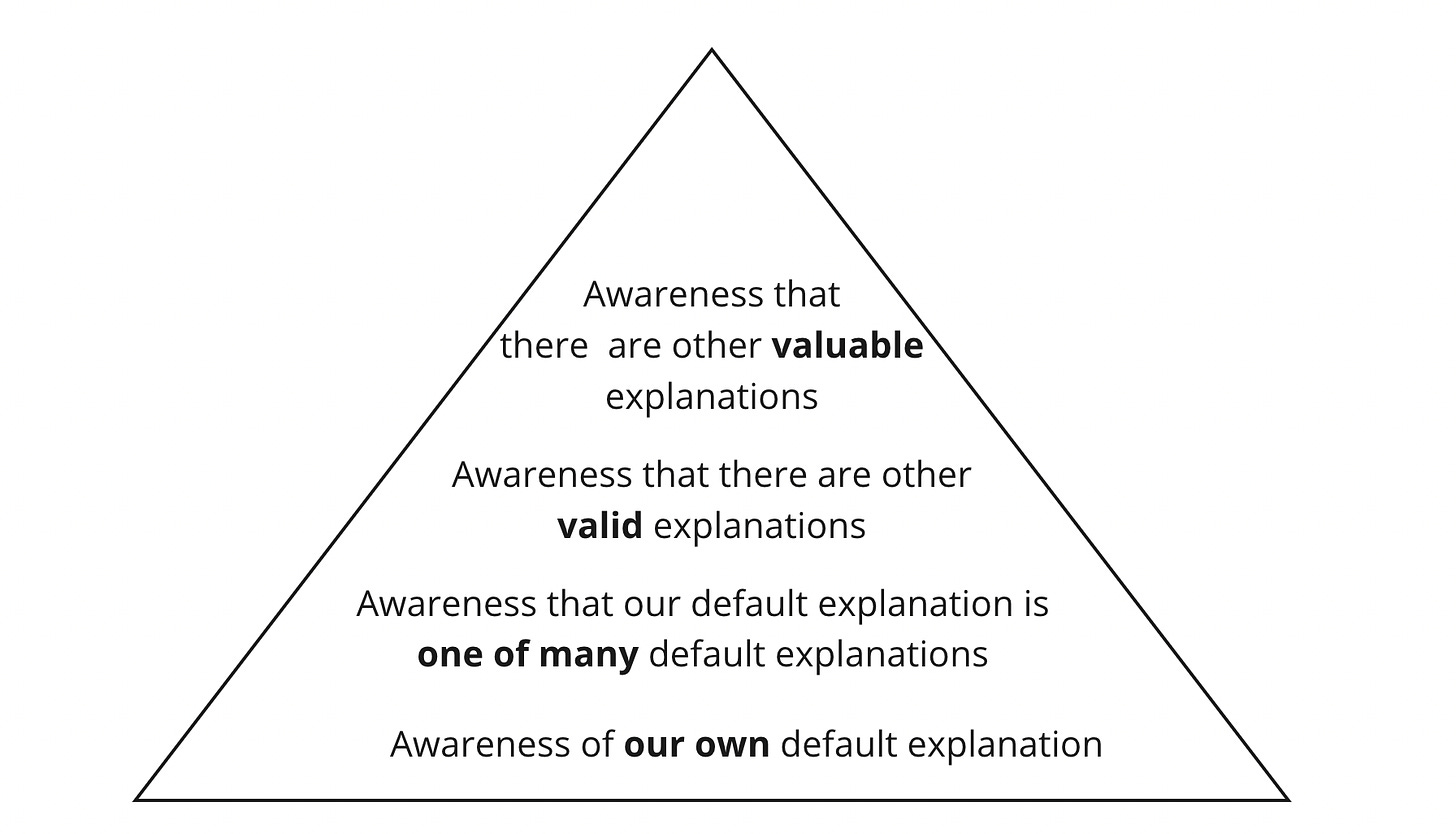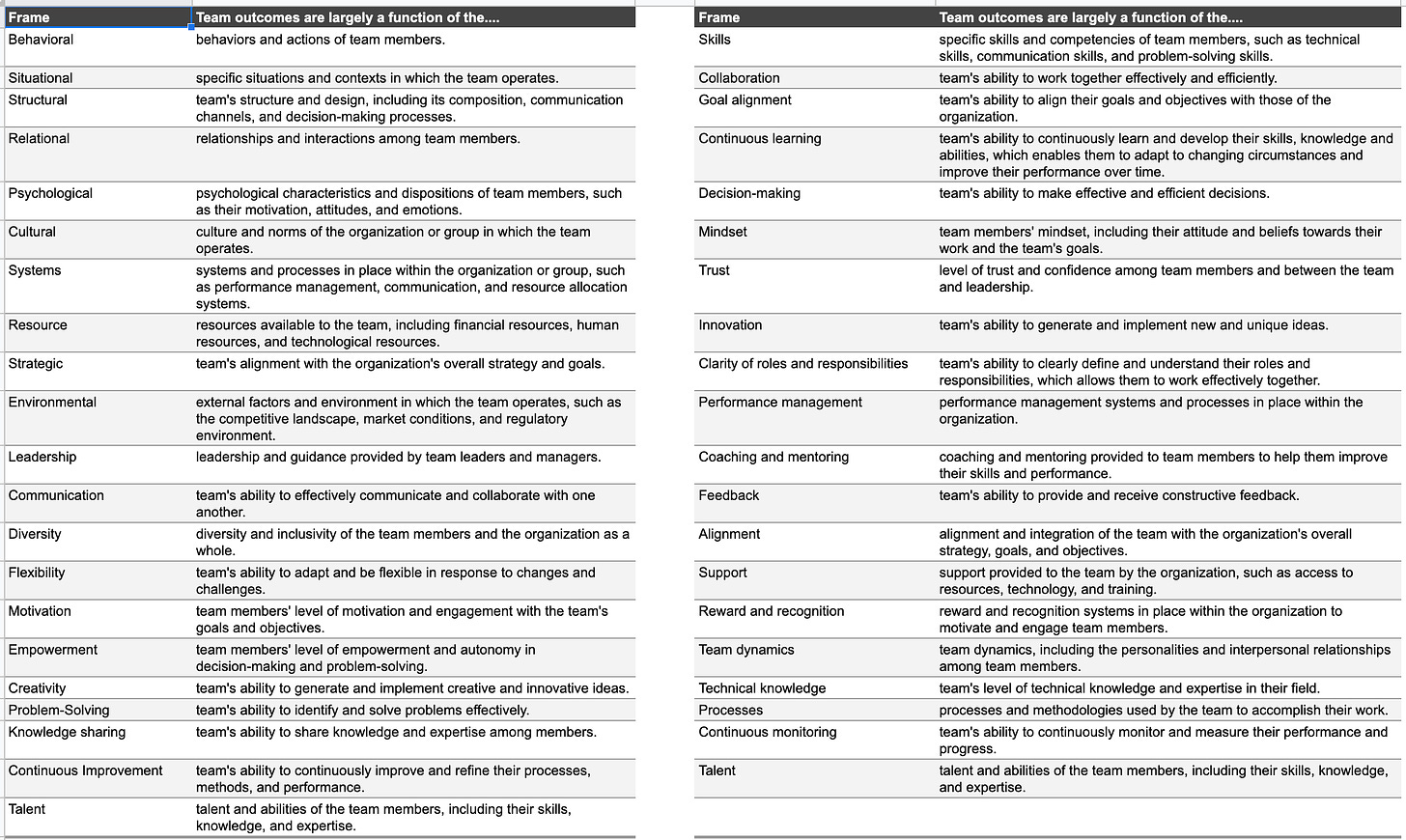This post is about being a better leader, problem solver, and team member by building your muscle for developing alternative explanations for challenging situations (while also acknowledging our defaults).
It is a simple framework for digging into something very complex.
Probably
When something goes wrong, all of us have a default explanation—our probably.
It's probably the leader's fault.
It's probably the environment they were working in.
We probably hired B players.
Our Probablys have deep roots in our upbringing, life experiences, work experiences, professional identity, belief systems, etc. They can and do change over time, but slowly and discontinuously.
Just
Default explanation in hand, we jump to a default next step—our just.
It's probably the leader's fault. We should just find a new leader.
It's probably the environment they were working in. We should just focus on continuously improving the environment.
We probably hired B players. This is what happens when we don't hire the best. We should just improve the rigor of our hiring.
Probablys and Justs are intrinsically related—the default explanation is linked to a default next step and solution. It's relatively automatic. I may wince when somebody else says, "we should just…" yet I say just all the time, even after practicing intercepting it.
As I discussed in Pyramid of Leadership Self/Other Awareness, people have varying degrees of awareness regarding their belief systems, which means that people have more and less understanding about their Probablys and Justs (and different degrees of conviction).
Note the difference between:
That's just the way it is everywhere, and that's how people are wired!
And
I was raised to believe that we ultimately can find a way, but I realize there's a lot of luck involved.
OK. We have our Probably and Justs and can work to build self and other-awareness.
What else?
Maybe
An important skill is our ability to generate alternative explanations, even if we don't find ourselves naturally inclined to believe these explanations.
I'm biased to believe it is the leader's fault and that we should just find a new leader. But maybe there's another explanation. Maybe this is more about the environment we've created for the collaboration between our leaders.
I'm biased to believe it is the environment the team is working in and that we should just focus on continuously improving the environment. But maybe there's another explanation. Maybe [Person] is not a great fit for the company and our culture.
I'm biased to believe that we hired B players and that we should just improve the rigor of our hiring. But maybe there's another explanation. Maybe we're not doing a good enough job orienting people around the domain and context of our product.
Some might see this as "soft" or "lacking confidence". I see it differently. The ability to explore alternative explanations is a powerful leadership trait. Even if we "fall back" on our defaults, it still pays to pause and document other options.
Sadly, some people seem unable to surface alternate explanations, even with the caveat that "you can always go back to your convictions!" Thankfully, with the right prompting, most people can "step outside themselves" and play the part of other worldviews and belief systems.
Perhaps (We, I)
Finally, we should explore alternative actions to help us understand the situation. What next step could help us navigate the space between our default explanations and valid—but perhaps uncomfortable—explanations?
Perhaps we could organize a small leadership team reset in the coming weeks and explore how we collaborate.
Perhaps I could take [Person] out to lunch and really try to understand what makes them tick.
Perhaps we could experiment with a new onboarding program that gives people a deeper perspective of our domain.
Recap
So that is a simple system:
Acknowledge your probably
Acknowledge when you are justing
Practice providing alternative explanations (maybe)
Practice giving next steps to explore the unknowns and your own biases (perhaps)
Before jumping to a conclusion, mentally work through:
Probably, Just, Maybe, Perhaps
This isn't about dishonoring yourself and your beliefs. A conviction can go a very long way. But we can all benefit from pausing and considering other views.
Reference
I used ChatGPT to create the table below which is a great start for exploring default explanations (our Probablys). What are your default explanations? When thinking about Maybes, which explanations can you try on for size?







Thank you for sharing your good thinking about leadership. Is the chart on the last page available in a different format to make it easier to read?
Really like this simple framework. It brings up the power of perspective (heavily leveraged during coaching). Maybe's tap into alternate perspectives for new awareness and resonant actions. Thank you!